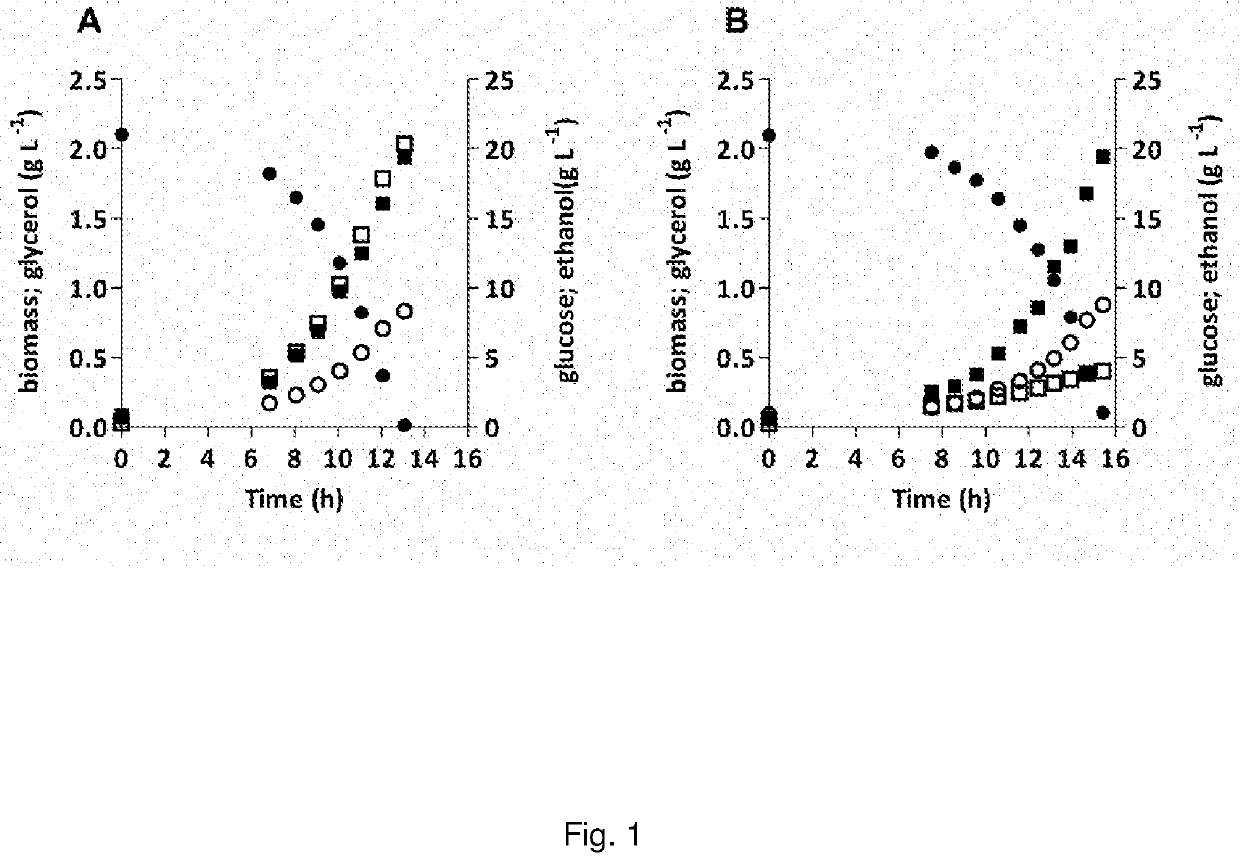Recombinant yeast cell
a technology of recombinant yeast and cell, applied in the direction of lyase, racemaces/epimerase, transferase, etc., can solve the problems of imposing waste water treatment costs, important constraints on product yield, and increasing process cost and complexity
- Summary
- Abstract
- Description
- Claims
- Application Information
AI Technical Summary
Benefits of technology
Problems solved by technology
Method used
Image
Examples
example 1
ssion of PPP Genes and Deletion of GPD2 Gene
[0123]GPD2 was deleted by transforming Saccharomyces cerevisiae strain IMX774 (which strain is disclosed in WO2017 / 216136) using an approach as described in pending European Patent Application EP16194660.3 and pending PCT Application PCT / EP2017 / 076148 with DNA fragments resulting in a deletion of the GPD2 coding sequence upon homologous recombination in IMX774. This was accomplished by co-transforming the guide RNA expression plasmid with GPD2 targeting sequence, thereby abrogating the coding sequence of gpd2. The resulting strain was named IMX949.
[0124]Genes of the non-oxidative branch of the pentose-phosphate pathway (TAL1, NQM1, TKL1, TKL2, RPE1, RKI1) were overexpressed by transforming in Saccharomyces cerevisiae strain IMX774 (which strain is disclosed in WO2017 / 216136) using an approach as described in pending European Patent Application EP16194660.3 and pending PCT application PCT / EP2017 / 076148, with expression cassettes of the abov...
PUM
| Property | Measurement | Unit |
|---|---|---|
| pH | aaaaa | aaaaa |
| ionic strength | aaaaa | aaaaa |
| temperature | aaaaa | aaaaa |
Abstract
Description
Claims
Application Information
 Login to View More
Login to View More - R&D
- Intellectual Property
- Life Sciences
- Materials
- Tech Scout
- Unparalleled Data Quality
- Higher Quality Content
- 60% Fewer Hallucinations
Browse by: Latest US Patents, China's latest patents, Technical Efficacy Thesaurus, Application Domain, Technology Topic, Popular Technical Reports.
© 2025 PatSnap. All rights reserved.Legal|Privacy policy|Modern Slavery Act Transparency Statement|Sitemap|About US| Contact US: help@patsnap.com

